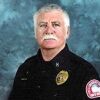Every year, hundreds of structural firefighters transition to wildland firefighting when the situation warrants. These firefighters take the federally mandated S-130-190 class and assess their stamina with a 50-pound pack and an altitude-adjusted hiking test.
Getting their “red card” and training with Pulaski tools and shovels are the beginning steps of getting into a segment of firefighting that keeps growing larger and more intense with every fire season.
The wildland-urban interface program, protecting structures in a wildland environment, has become the focus for many fire departments, not only as an entry into wildland firefighting, but as a topic of public interest. Taught as S-215, this program’s class deals with the threat of wildland fire, ways to mitigate such a potential danger and the skills needed to keep it from destroying homes, ranches, cabins and other buildings in its path.
Government, public support
The public is solidified in its support of this growing challenge through such programs as Ready, Set, Go and Firewise, designed to educate homeowners on ways to protect their properties.
With more homes in fuel-rich environments, the forest service has become acutely aware of the increasing social perception over the past few decades. As one wildland instructor put it, “You can lose 1,000 acres of forest and it makes page 8 in your local paper, but lose one house and your fire is now on page 1.” As a result, state and federal programs have actively courted structural firefighters to become frontline participants.
Such a commitment by various forestry agencies has been extremely advantageous for most traditional fire departments looking for more training and resources.
The decision to join the ranks of wildland firefighters, however, remains with each individual organization. Sending a wildland/structure crew with a Type I engine on a state or federal fire, while financially and politically beneficial, can be stressful for firefighters unfamiliar with wildland fire campaigns.
As a structural crew turned red card wildland firefighters, bulky bunker gear is replaced by lightweight helmets complete with goggles and flaps, Nomex outerwear, wildland boots and gloves, fire shelters, canteens and deployment packs. An SCBA is now a damp bandana.
Getting on scene
Your department’s crew and vehicle arrive at check-in to become part of a sizeable collection of resources. Type I, III and VI engines are stacked together, some trucked in from the East Coast.
Hotshot crews from the Dakotas or out West arrive constantly, always together and all walking in a line. Trailers for command divisions, each marked for a specific incident task, are lined up in paperwork order waiting for confirmation forms.
Equipment, rehab, food and assembly tents are open for business and focused on supplementing action plans, operational periods and resource deployment for the over 1,000 firefighters and their tools moving in and out of base camp.
Check-in requires a vehicle inspection, documentation and general preparation for the next information cycle. Briefings occur at the beginning of all operational periods and include a presentation of the revised action plan, current and expected weather conditions, special considerations such as topography and fuel loads, as well as specific assignments.
Getting deployed
Coming from the structural side of the interface program, your engine and crew can be one of five engines assigned to a strike team going into a particular neighborhood, or as an individual resource assigned to a frontline task force incorporating everything from bulldozers to hotshot crews.
Regardless of the assigned task, no one is released from camp unless all safety criteria are met. Fire shelters, proper tools and equipment, as well as current paperwork are all necessary for participation in each assignment.
Deployment can be as long as 14 days, but specific assignments may mean going out and not returning to base camp for days. During large fires, the resource center may distribute sleeping bags, tents and extra outerwear, but it cannot be counted on for everything.
Most personal items need to be brought from home. Extra socks, clean underwear, sunscreen, bug repellant, toiletries, reading material, energy snacks and the like are part of an individual’s responsibility.
A different dragon
Comfort and safety in the field is a personal obligation. Some experienced wildlanders have been known to bring a blowup pillow and a solar charger for their cell phones. Remember too, that an engine makes a great camper.
Planning for time in the field by storing additional equipment, meals and nighttime necessities in addition to bunker gear goes a long way in promoting a safe and secure experience, especially when living out of a fire truck for days at a time.
Fighting a structure fire from the outside is a totally different dragon, as weather, fuels and terrain are very different conditions during an interface fire.
Struck by the sheer vastness and resource intensity of a fire crowning across a forest or raging up a gully chimney, structure/wildland firefighters quickly gain an appreciation and respect for a different kind of fire environment and the skills needed to be a competent “ground pounder.”
Complex fire situations, limited experience and challenged resources all contribute to the risk but do not deter from the desire to defend life and property. Fighting fire in whatever form increases our profile and adds to every firefighter’s morale and sense of community service.
That’s reasons enough for entry into the world of training and education that is available to us as wildland firefighters.
This article, originally published Aug. 25, 2014, has been updated.













